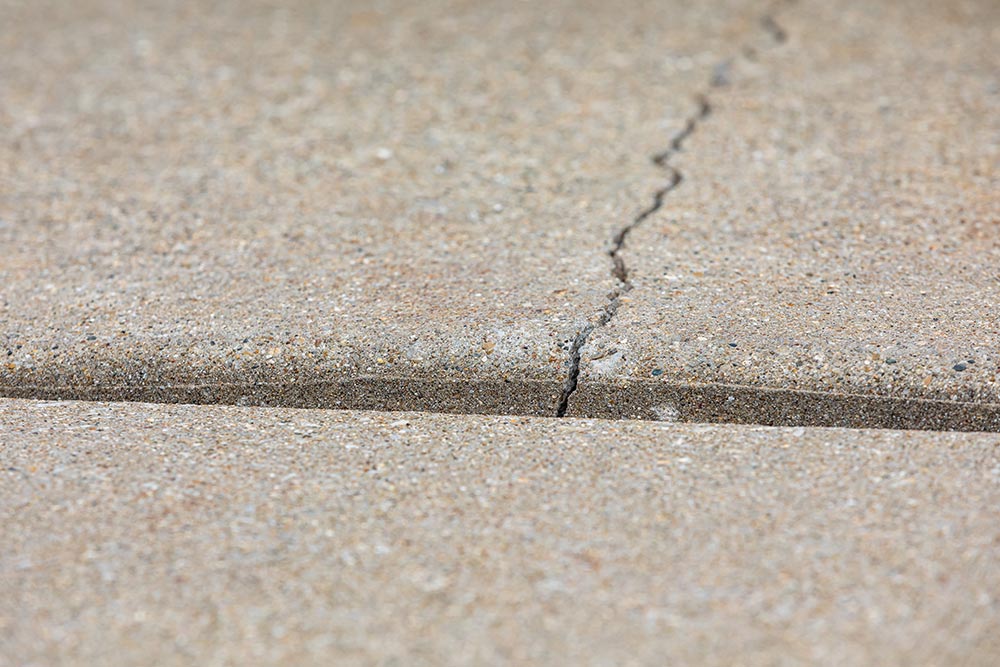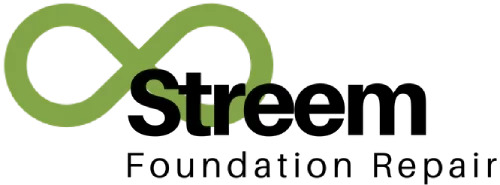Concrete is known for its strength, which is why it’s used to build many different structures (such as sidewalks, driveways, pool decks, and patios). But it can still fall victim to damage and deterioration over time, which will need to be repaired. Concrete leveling is a solution for addressing any issues related to uneven or settled concrete surfaces. It will allow you to address these issues without having to tear everything down for a full replacement. The settled concrete can be lifted back to its original position, which is much less invasive. It can also enhance the safety, functionality, and visual appeal of a concrete surface.

How Concrete Leveling Works
Concrete leveling is meant to realign uneven or settled concrete surfaces to their initial level (which can enhance their safety, functionality, and appearance). The technique uses a few primary methods, depending on the concrete’s condition and the desired result. It’s important to look at the state of the concrete surface, so the need for leveling can be determined. If you don’t see any noticeable weakness, sinking, or potential tripping hazards, you should get it looked at by a professional because he or she will be able to make a more accurate determination.
The cost of concrete leveling can vary and is largely influenced by the following factors:
- The size of the area
- The severity of the issue
- The chosen repair technique
- The scope of the needed repairs
Concrete leveling can be a more economical option than a complete replacement. But as you look at the advantages and disadvantages, you should think about your specific needs. You should also speak with a professional so you can make an informed decision.
Popular Methods for Concrete Leveling
Here are some of the common approaches for concrete leveling:
- Polyurethane Foam Injection — This is a quick and straightforward method that’s used by many professionals to raise and stabilize sinking concrete slabs. It involves pumping a lightweight polyurethane foam into the concrete through tiny holes, which are drilled into the concrete. The foam will then expand under the slab, which will fill the voids that have formed between the concrete and the soil.
- Mudjacking — Also referred to as “slabjacking,” this method is an effective way to repair uneven or sunken concrete. A special slurry (which is a mixture of water, soil, sand, and cement) is injected under the slab. As it hardens, it forms a strong and stable foundation that will fill any voids and fix any underlying issues that can lead to concrete deformation.
- Cement or Stone Slurry — This method combines the techniques used in mudjacking and polyurethane foam injection, which offers a unique and efficient way to fix uneven concrete slabs. It uses a specially formulated mix of crushed stones (mostly limestone) that’s mixed with water to create a dense, malleable slurry. This mixture is precisely injected under the concrete with equipment that’s similar to what’s used for polyurethane foam injection. But the procedure requires the drilling of larger holes (approximately one inch in diameter), which is similar to what’s needed for mudjacking.
Be sure to speak to a professional for more information.
When You Should Level Your Concrete
There are many reasons why you may want to look for concrete leveling services. Your vehicle may have gotten damaged because of an uneven driveway, which is a common occurrence. It’s a clear sign that you need concrete leveling. Going over bumps and dips in your garage or driveway on a frequent basis can damage your car’s suspension and tires, which can cause more wear and tear in addition to regular maintenance.
The presence of cracks or uneven areas of your concrete is also a sign that it needs to be leveled. Steps may look misaligned. You may also notice fractures in your exterior brickwork, stonework, or siding. It’s not uncommon for chimneys to show signs of cracking or even detach from the house itself.
Aside from the aesthetic issues that can affect your home’s curb appeal, cracked and uneven concrete surfaces can create a major safety hazard and a potential liability. Uneven slabs are a tripping hazard that can cause injuries, which may be a problem for the elderly and people with mobility issues. These types of hazards can be particularly dangerous around pool decks.
To keep these issues from becoming major problems, you should take care of them at the earliest signs of trouble. Contacting a professional as soon as you notice movement can save money in the long run. If you’re looking for one of the best places for foundation & concrete repair in Corpus Christi, be sure to get in touch with Streem Foundation Repair.
Concrete Lifting FAQ
Concrete lifting is a practical and cost-effective solution for repairing uneven or sunken concrete surfaces. Whether it’s a sinking driveway, patio, or pool deck, this repair method can restore the functionality of your concrete and restore its aesthetic appeal. The process has been around for almost a century and was originally called “mudjacking” or “slabjacking,” but the use of polyurethane foam is a relatively new concept and has been used to support a number of modern structures.
Here are some common questions people ask about concrete lifting.
Concrete lifting is a process for raising sunken or uneven concrete by injecting a special material under the slab. For polyurethane foam lifting, a lightweight foam is injected through small holes that are drilled into the concrete. The foam will expand, which will fill voids and lift the slab back into place. Using this technique will allow contractors to restore the level of a concrete slab without doing an expensive and time-consuming replacement.
Concrete lifting that uses polyurethane foam is extremely durable, so it can last a long time. The foam is resistant to water, erosion, and soil movement (which will make sure the repair stays stable for many years). If it’s done properly by a professional, the results can last as long as or longer than the original concrete.
The cost of concrete lifting can depend on a number of factors. Some of them include the following:
– The size of the area.
– The extent of the damage.
– The materials being used.
Lifting the concrete is usually more affordable than doing a complete replacement. But if you want to get a more accurate estimate, be sure to speak to a concrete lifting company.
In most cases, concrete lifting is a better option than a replacement. It’s faster, less expensive, and better for the environment. Instead of removing and getting rid of old concrete, concrete lifting allows you to reuse the old slab (which will save time and resources while also reducing waste).
Concrete lifting is a quick process that usually doesn’t take more than a few hours. Most projects can be completed in one day, which makes it a convenient option for many homeowners and business owners.
Concrete lifting can work for many different surfaces, including the following:
Driveways.
Sidewalks.
Patios.
Garage floors.
Pool decks.
The condition of the concrete and its surrounding soil must be evaluated to make sure the process will be effective.
While concrete lifting will restore the level of your slab, the repair might leave small patches where the injection holes were drilled. These holes are usually filled with matching materials to minimize their visibility, but there will be slight differences in texture or color.
Concrete can sink for the following reasons:
Soil Erosion — Water can wash away soil under the slab, which creates voids.
Poor Soil Compaction — Soil that hasn’t been compacted properly can settle over time, which can cause the concrete to sink.
Water Damage — Excess moisture can weaken the soil, which can cause the concrete to shift or settle.
If you know and understand these causes, you can prevent any serious issues from developing.
Polyurethane concrete lifting is an eco-friendly solution that uses less resources than a complete replacement, because it can keep old slabs from being thrown into landfills. The foam is inert, so it doesn’t release any harmful chemicals into the environment.
One of the benefits of polyurethane foam lifting is that it has a quick curing time. In most cases, you can walk on the repaired concrete 15 minutes after the repair has been completed. You can drive on the surface within a few hours. It will, of course, depend on the specific project and various weather conditions.
Polyurethane foam can cure in warm, cool, and even wet conditions. But there are some situations where concrete lifting isn’t a good idea. If the slab has been cracked into a number of small pieces, it will be harder to lift the entire slab. It’s also not recommended if the weather is below freezing and the ground is frozen.
If you’re looking for one of the best places for foundation repair in Corpus Christi, be sure to reach out to Streem Foundation Repair.
